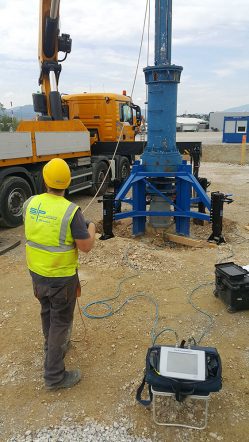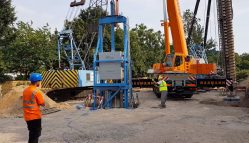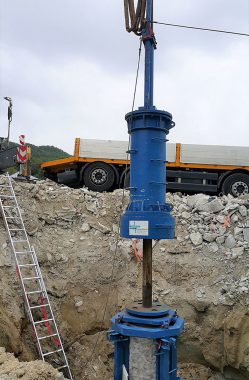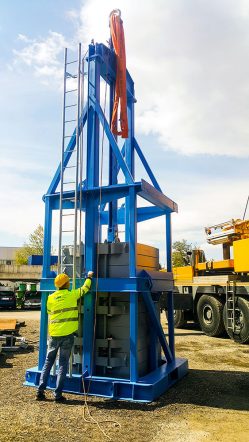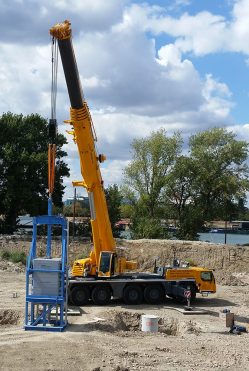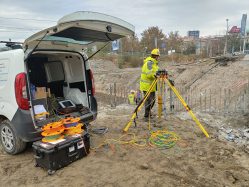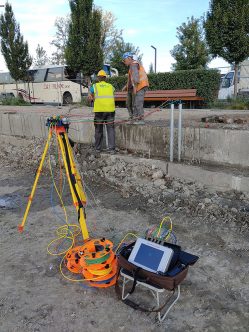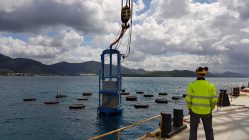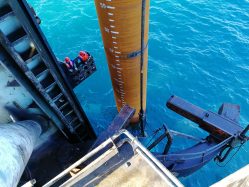Our company performs Pile Dynamic Load Test (DLT) in accordance with ASTM D4945-00 Standard Test Method for High-Strain Dynamic Testing of Piles.
DLT is a fast, reliable and cost effective method of assessing pile foundation bearing capacity. Our company uses the Pile Driving Analyzer®, CAPWAP® software and Free Fall Weight Hammers to perform the testing. Our engineers furnish a detailed report for each Dynamic Load testing project that includes a simulated static load test in the form of a calculated load-test curve.
DLT involves a substantial ram mass that impacts the top of the pile and causes it to experience at least a small permanent set. Accelerometers and strain transducers attached to the pile measure force and velocity as the free fall weight hits pile top. In addition to bearing capacity, Pile Dynamic Load Testing gives information on resistance distribution (shaft resistance and end bearing) and evaluates the shape and integrity of the foundation element.
Our engineers perform DLT on driven piles, drilled shafts and other cast in place piles and usually conduct several tests in one single day. DLT presents an alternative to Static Load Test (SLT) and can be performed both onshore and offshore.


